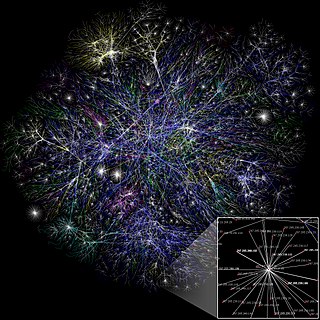 W
WA social network is a social structure made up of a set of social actors, sets of dyadic ties, and other social interactions between actors. The social network perspective provides a set of methods for analyzing the structure of whole social entities as well as a variety of theories explaining the patterns observed in these structures. The study of these structures uses social network analysis to identify local and global patterns, locate influential entities, and examine network dynamics.
 W
WThis is a list of notable individuals who research complex networks, including social networks, biological networks, and semantic networks, among others. Individuals are categorized based on their background and training, or their area of focus.
 W
WThe art world comprises everyone involved in producing, commissioning, presenting, preserving, promoting, chronicling, criticizing, buying and selling fine art. It is recognized that there are many art worlds, defined either by location or alternative definitions of fine art. Some may use the singular art world to refer only to the elite level of globalized fine art. The art world(s) are continually changing in response both to the creativity of those that create art and in response to social change.
 W
WThe Barabási–Albert (BA) model is an algorithm for generating random scale-free networks using a preferential attachment mechanism. Several natural and human-made systems, including the Internet, the world wide web, citation networks, and some social networks are thought to be approximately scale-free and certainly contain few nodes with unusually high degree as compared to the other nodes of the network. The BA model tries to explain the existence of such nodes in real networks. The algorithm is named for its inventors Albert-László Barabási and Réka Albert and is a special case of an earlier and more general model called Price's model.
 W
WIn network science, a biased random walk on a graph is a time path process in which an evolving variable jumps from its current state to one of various potential new states; unlike in a pure random walk, the probabilities of the potential new states are unequal.
 W
WCatfishing is a deceptive activity where a person creates a fictional persona or fake identity on a social networking service, usually targeting a specific victim. The practice may be used for financial gain, to compromise a victim in some way, as a way to intentionally upset a victim, or for wish fulfillment. Catfishing media has been produced, often featuring victims who wish to identify their catfisher. Celebrities have been targeted, which has brought media attention to catfishing practices.
 W
WA citation graph, in information science and bibliometrics, is a directed graph that describes the citations within a collection of documents.
 W
WEnterprise social networking focuses on the use of online social networks or social relations among people who share business interests and/or activities. Enterprise social networking is often a facility of enterprise social software, which is essentially social software used in "enterprise" (business/commercial) contexts. It encompasses modifications to corporate intranets and other classic software platforms used by large companies to organize their communication, collaboration and other aspects of their intranets. Enterprise social networking is also generally thought to include the use of a standard external social networking service to generate visibility for an enterprise.
 W
WThe Erdős number describes the "collaborative distance" between mathematician Paul Erdős and another person, as measured by authorship of mathematical papers. The same principle has been applied in other fields where a particular individual has collaborated with a large and broad number of peers.
 W
WThe Fediverse is an ensemble of federated servers that are used for web publishing and file hosting, but which, while independently hosted, can communicate with each other. On different servers (instances), users can create so-called identities. These identities are able to communicate over the boundaries of the instances because the software running on the servers supports one or more communication protocols which follow an open standard. As an identity on the fediverse, users are able to post text and other media, or to follow posts by other identities. In some cases, users can even show or share data publicly or to a selected group of identities and allow other identities to edit other users' data.
 W
WFront Porch Forum (FPF) is a social network founded in 2000 and based in Burlington, Vermont. It is a Vermont public benefit corporation. Users interact with the site either through a web page, mobile application, or via email. Posts to the site are aggregated and curated by staff, and distributed as email digests.
 W
WGeneralized exchange is a type of social exchange in which a desired outcome that is sought by an individual is not dependent on the resources provided by that individual. It is assumed to be a fundamental social mechanism that stabilizes relations in society by unilateral resource giving in which one's giving is not necessarily reciprocated by the recipient, but by a third party. Thus, in contrast to direct or restricted exchange or reciprocity, in which parties exchange resources with each other, generalized exchange naturally involves more than two parties. Examples of generalized exchange include; matrilateral cross-cousin marriage and helping a stranded driver on a desolate road.
 W
WGeosocial networking is a type of social networking in which geographic services and capabilities such as geocoding and geotagging are used to enable additional social dynamics. User-submitted location data or geolocation techniques can allow social networks to connect and coordinate users with local people or events that match their interests. Geolocation on web-based social network services can be IP-based or use hotspot trilateration. For mobile social networks, texted location information or mobile phone tracking can enable location-based services to enrich social networking.
 W
WA global network is any communication network which spans the entire Earth. The term, as used in this article refers in a more restricted way to bidirectional communication networks, and to technology-based networks. Early networks such as international mail and unidirectional communication networks, such as radio and television, are described elsewhere.
 W
WMain path analysis is a mathematical tool, first proposed by Hummon and Doreian in 1989, to identify the major paths in a citation network, which is one form of a directed acyclic graph (DAG). The method begins by measuring the significance of all the links in a citation network through the concept of ‘traversal count’ and then sequentially chains the most significant links into a "main path", which is deemed the most significant historical path in the target citation network. The method is applicable to any human activity that can be organized in the form of a citation network. The method is commonly applied to trace the knowledge flow paths or development trajectories of a science or technology field, through bibliographic citations or patent citations. It has also been applied to judicial decisions to trace the evolving changes of legal opinions. Main path analysis has attracted scholars attention recently. Academic research related to main path analysis saw a fast growing since 2007. A list of academic articles that introduce, explain, apply, modify, or extend the method originated in Hummon and Doreian can be found here.
 W
WMobile social networking (MSN) is social networking where individuals with similar interests converse and connect with one another through their mobile phone and/or tablet. Much like web-based social networking, mobile social networking occurs in virtual communities.
 W
WPersonal media are media of communication which are used by an individual rather than by a corporation or institution. They are generally contrasted with mass media which are produced by teams of people and broadcast to a general population. In other words, personal media allow individuals, as opposed to corporate entities, to contribute knowledge and opinion to the public. The term dates from the 1980s.
 W
WPheme is a 36-month research project begun in 2014 into establishing the veracity of claims made on the internet.
 W
WScientific collaboration network is a social network where nodes are scientists and links are co-authorships as the latter is one of the most well documented forms of scientific collaboration. It is an undirected, scale-free network where the degree distribution follows a power law with an exponential cutoff – most authors are sparsely connected while a few authors are intensively connected. The network has an assortative nature – hubs tend to link to other hubs and low-degree nodes tend to link to low-degree nodes. Assortativity is not structural, meaning that it is not a consequence of the degree distribution, but it is generated by some process that governs the network’s evolution.
 W
WA sexual network is a social network that is defined by the sexual relationships within a set of individuals.
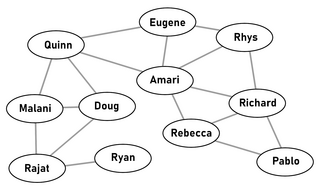 W
WSix degrees of separation is the idea that all people are six or fewer social connections away from each other. As a result, a chain of "friend of a friend" statements can be made to connect any two people in a maximum of six steps. It is also known as the six handshakes rule.
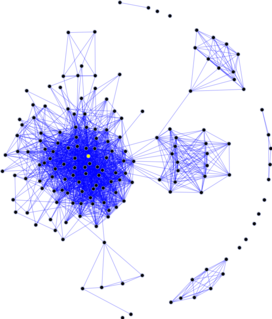 W
WThe social graph is a graph that represents social relations between entities. In short, it is a model or representation of a social network, where the word graph has been taken from graph theory. The social graph has been referred to as "the global mapping of everybody and how they're related".
 W
WSocial network analysis (SNA) is the process of investigating social structures through the use of networks and graph theory. It characterizes networked structures in terms of nodes and the ties, edges, or links that connect them. Examples of social structures commonly visualized through social network analysis include social media networks, memes spread, information circulation, friendship and acquaintance networks, business networks, knowledge networks, difficult working relationships, social networks, collaboration graphs, kinship, disease transmission, and sexual relationships. These networks are often visualized through sociograms in which nodes are represented as points and ties are represented as lines. These visualizations provide a means of qualitatively assessing networks by varying the visual representation of their nodes and edges to reflect attributes of interest.
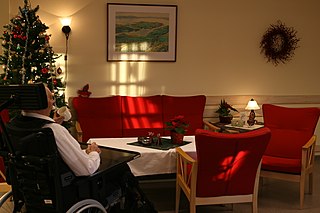 W
WSocial support is the perception and actuality that one is cared for, has assistance available from other people, and most popularly, that one is part of a supportive social network. These supportive resources can be emotional, informational, or companionship ; tangible or intangible. Social support can be measured as the perception that one has assistance available, the actual received assistance, or the degree to which a person is integrated in a social network. Support can come from many sources, such as family, friends, pets, neighbors, coworkers, organizations, etc.
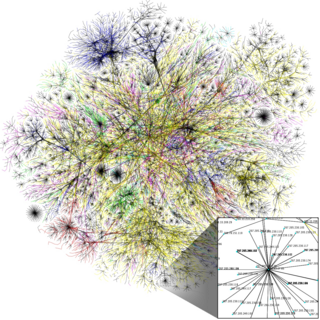 W
WThe sociology of the Internet involves the application of sociological theory and method to the Internet as a source of information and communication. The overlapping field of digital sociology focuses on understanding the use of digital media as part of everyday life, and how these various technologies contribute to patterns of human behavior, social relationships, and concepts of the self. Sociologists are concerned with the social implications of the technology; new social networks, virtual communities and ways of interaction that have arisen, as well as issues related to cyber crime.
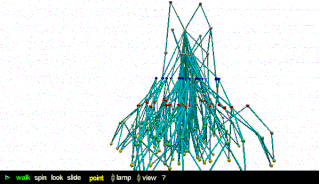 W
WStructural endogamy is a network concept that provides a means of finding the boundaries of endogamy in a community, using simply the genealogical and marriage linkages. The concept is related to that of structural cohesion. The examples are made with free tool Pajek. Another name for structural endogamy is (marital) relinking, which comes out of French social anthropology, and the study of how communities are formed through couples marrying who are already linked: linked, that is, by chains of kinship and marriage, as in circles of intermarrying families, or marriages between people with one or more ancestors in common. Many of the marriages represented in the Turkish nomads figure are with cousins, for example. But relinking also occurs without blood marriages, as in the example from the Mexican village of Belén Atzitzi-mititlán within Apetatitlán de Antonio Carvajal.
 W
WTargeted immunization strategies are approaches designed to increase the immunization level of populations and decrease the chances of epidemic outbreaks. Though often in regards to use in healthcare practices and the administration of vaccines to prevent biological epidemic outbreaks, these strategies refer in general to immunization schemes in complex networks, biological, social or artificial in nature. Identification of at-risk groups and individuals with higher odds of spreading the disease often plays an important role in these strategies.